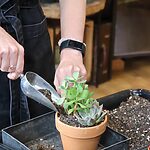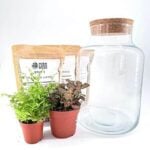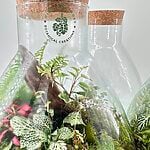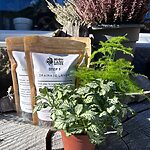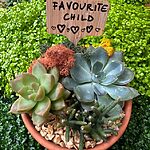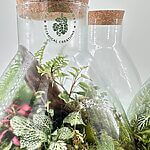All About Colorful Calatheas
There are few plants as vibrant and interesting as Calatheas. These joyfully bright plants belong to the family Marantaceae and consist of around 200 species that make up the genus Goeppetia. Consisting mainly of flowering perennials that grow in clumps from tuberous subterranean roots these plants are naturally found growing in deep shade under dense vegetation in the tropical rainforest of predominantly South America and across the tropical regions of Africa.
The real beauty of Calathease comes from its leafy foliage, producing bright and exotic colour combinations. These plants have been admired by plant enthusiasts for the better part of a century and have become the symbol of a new start. We’ve all heard of the saying “to turn over a new leaf” which has been coined from the habits of the Calathea. All Calatheas have developed the habit of turning over and closing their leaves. This happens when the plant is less active during periods of little to no light and helps them to maintain its energy in a dense and competitive growing environment.
Light
Calatheas, like most houseplants, will perform best in areas with an abundance of bright indirect light. But these plants would typically be found amongst dense vegetation on the forest floor where the light levels can be quite low. With this in mind, Calatheas are well adapted to be placed in low-light areas as houseplants, while they will still need some light to be able to photosynthesise they can tolerate shady areas much better than most houseplants. But this also means they should be placed out of the reach of direct sunlight at all costs as this will scorch the leaves and cause the plant a high level of distress. Note that some Calatheas will lose their colour with insufficient light, it’s always best to do some research before choosing the perfect position for your plant.
Humidity
Being a tropical forest plant, Calatheas thrive in high humidity and feel most comfortable at around 60-70%, they can absorb a lot of the moisture they need from their broad leaves. While they can adapt to tolerate lower levels of around 40-50% humidity they won’t perform as well without some additional source of humidity. You can increase humidity by regularly misting your plant throughout the day or providing a heavy misting every couple of days (be sure to use rain or distilled water for Calatheas).
Water
It can sometimes be tricky to tell when Calatheas need their next watering. These plants are susceptible to overwatering, which can be very damaging to their health. It’s best to wait until you see signs the plant needs water as opposed to regular watering once a week, look for a slight inward curl in the leaves and drooping of the stems as this is the best indicator that the plant needs a drink. When watering, ensure that you keep the soil evenly moist and avoid watering heavily to the point that the soil becomes saturated, as this can starve the roots of the airflow it needs to survive. It’s always good practice to use rain or distilled water instead of water straight from the tap, especially with Calatheas as they are more sensitive than most to the chemicals that can be found in everyday tap water.
Soil
Calatheas prefer well-drained soil that can retain some moisture between watering. The ideal soil mix for these plants will be nutrient-rich, allow for good aeration, be slightly acidic(6.2PH-6.6PH), and be free-draining with a smidge of water retention. While not part of the Arum family they will appreciate an aroid potting mix as this will give them the environment they need to perform well.
Other good potting mixes for Calatheas can be made up of; 1 part shredded bark (orchid bark will do the same job), 1 part vermiculite, 2 parts perlite and 4 parts sphagnum moss. Or just a regular house plant potting mix enriched with perlite, for this mix it’s best to go for 60% house plant potting mix and 40% perlite.
Feed
Like most houseplants, to promote healthy roots, stems, and leaves they will need a steady supply of nitrogen, phosphorus, and potassium. The most important thing is nitrogen to keep their colourful leaves looking their best. A good liquid houseplant feed can be applied monthly during the growing season. There’s no need to feed during the winter, light levels are much lower and the plant won’t use as much energy to grow.
Repotting
It’s best to repot your Calathea once the roots fill their pot. Depending on the size of the plant, you may find yourself repotting once per year. That being said, they don’t mind being pot-bound, they can survive like this for quite some time, as long as they are receiving enough nutrients via feeding.
The pot size can increase by one step up every year. Calatheas tend to perform better in wider pots as they grow from rhizomes, having a wider pot will allow the rhizomes to grow more comfortable and will help support a healthier plant.
If you have reached your maximum pot size you will need to top-dress the plant once a year with a fresh layer of soil to replenish the nutrients.
The best time to repot your Calathea is when spring arrives. Outside temperatures will rise and the daylight hours will increase. When this happens your Calathea will react quickly to the environmental change and start producing lots of new foliage growth.
You will need to pick a pot with good drainage, we don’t want water hanging around the roots.
Next, fill a third of the way up with your potting mix and place the root ball of the plant in the centre of the pot.
Fill the pot with the rest of your potting mix and firm down the soil.
When you’ve finished and got your plant back in the perfect spot you can give it a thorough watering to settle the plant into its new pot. Keep a close eye on it for the first couple of weeks and then relax back into your normal watering and feeding schedule. Avoid feeding for the next 6 weeks as this influx of additional nutrients can cause damage to the root system and make it difficult for the plant to settle into its new environment.
Pests & Disease
Even though Calatheas are tough and resilient plants they can still suffer from pests. It is good practice to regularly check your plants for any signs of aphids, red spider mites, mealy bugs, and thrips. By checking regularly, you allow yourself time to prevent a full-blown attack.
The most common pests Calatheas tend to suffer from are red spider mites. This will normally occur from a lack of airflow and humidity. If you can increase both of these aspects, the pests tend to subside but will need to be treated to fully get rid of the issue.

Check our video on homemade pest remedies or head over and read Fungus Gnat Fact Check and Home Remedies how to guide
Pruning & Propagating
To keep your plant looking full and lush it is always good practice to keep it well trimmed. Cutting away the oldest and most damaged growth on the plant is a great way to encourage new foliage growth and to keep your plant happy.
Calatheas grow from clump-forming rhizomes so the easiest way to propagate these plants is by dividing them.
Dividing Calatheas is a really simple and easy job because of their clump-forming nature, the natural division points are clear to see and will often only need a gentle pull apart. Ensure that each clump has a decent amount of roots attached before pulling it away from the main root ball. With especially large or mature Calatheas it may be tricky to pull these clumps apart as the roots will be tangled forming a strong bond between clumps. In this case, it is best to use a sterilised sharp knife to cut through the root ball, again ensuring to leave a decent amount of roots on each section you are dividing.
Troubleshooting & Tips
- Calatheas are great air purifiers so they are a great addition to any area of the home.
- Inward curling leaves are a sign your plant needs water. Calatheas bounce back quickly once watered.
- Yellow and/or wilting leaves are signs your plant has been overwatered. Allow the plant to fully dry out before watering again and check the root ball for signs of rot root.
- If your Calathea leaves are looking faded and bright colours no longer seem so bright, this is often a sign that your plant is getting too much or too little light and will need to be moved to a shadier or sunnier location.
- If you are developing crispy brown patches on the leaves, this is often a sign your plant is in the path of direct sunlight and is getting scorched and sunburnt.
- Discoloured leaf tips and edges are an indicator that the environment is too dry. You will need to boost the humidity.
- If the edges of your plant are starting to become brown followed by the whole plant wilting, this can be a sign of temperature or transplant shock, which can occur from sudden changes in ambient temperature or persistent cold drafts but can also develop if the plant is watered with cold water causing shock to the root system.
Toxicity
Calathea is classed as non-toxic to humans and pets but it’s probably still best to keep them out of reach of curious children and pets.
Species

Calathea Network
This relatively new species of Calathea has a striking mosaic pattern on its large dark green glossy leaves. The pattern on the leaves is incredibly unique and intricate, the leaves form indents which give the appearance of small rectangles which cover the leaf. This stunning Calathea then produces multiple shades of green throughout the leaf, a must-have if you are after something strikingly different!
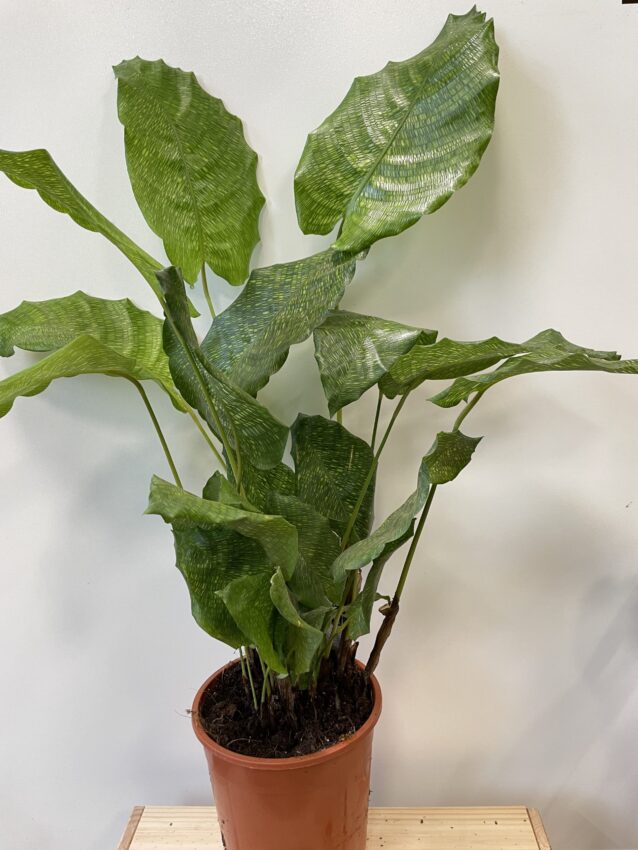

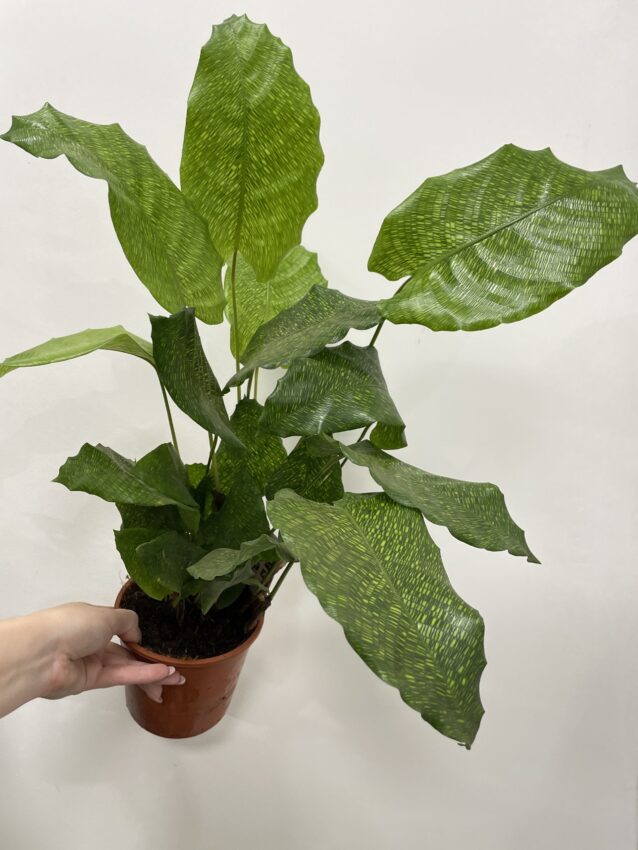
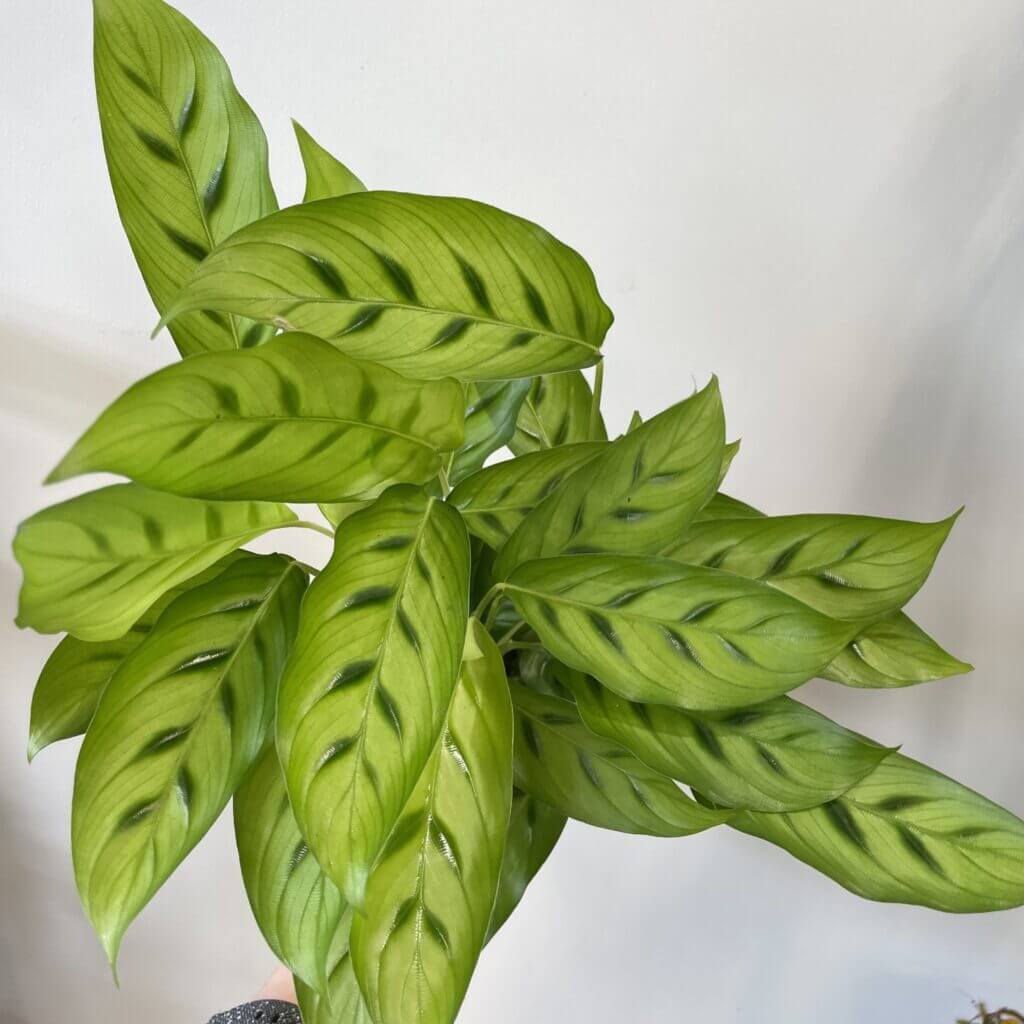
Calathea Leopardina Prayer Plant
This makes for a great beginners plant as it is incredibly easy to look after, and is one of the hardiest Calatheas out there. This plant has a gorgeous growing form, its elegant upright stems produce vivid bright green leaves that can almost look transparent, with dark green splashes along the centre of the leaf. As this plant matures and becomes dense with foliage it turns into a true statement of beauty.

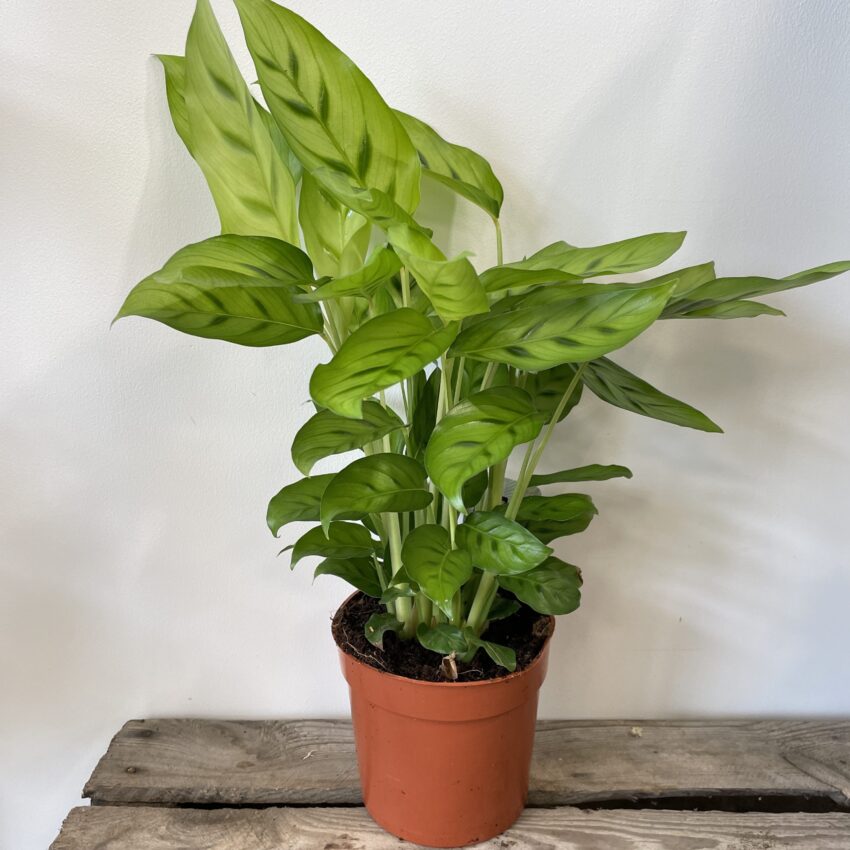
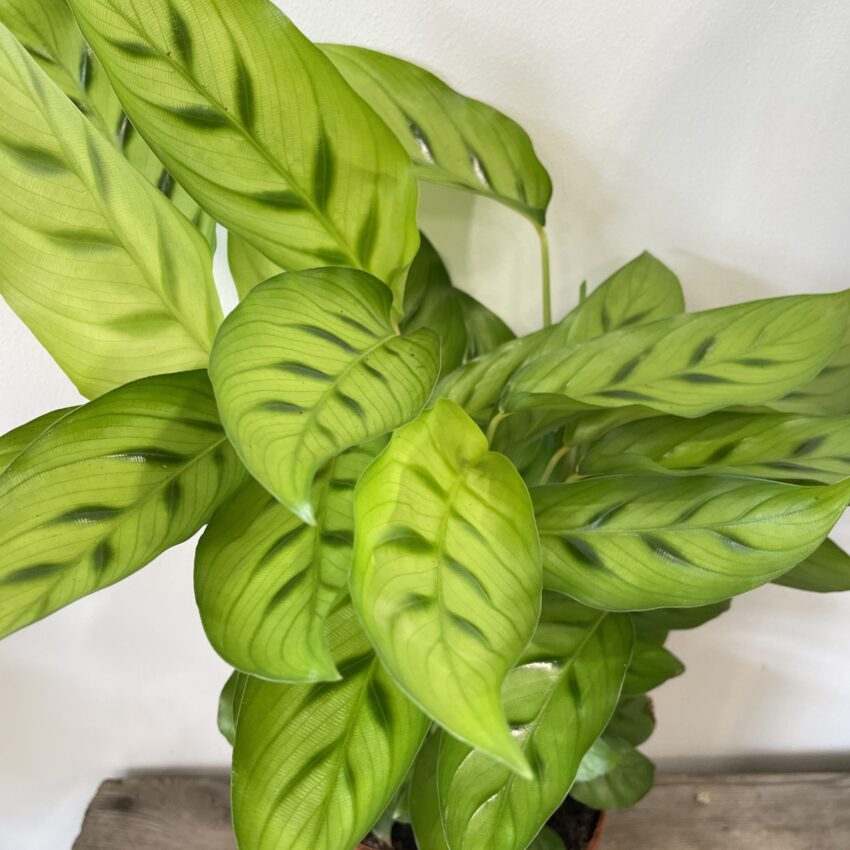

Calathea Maui Queen Prayer Plant
This Calathea has broad ovate leaves of vibrant green, but what makes this plant extra special is the splash of rich, creamy white down the centre of the leaves which almost looks as if its hand painted. The underside of the leaves is a deep rich purple colour that can quickly catch your eye. This incredibly decorative plant in my opinion could be more of an interior design choice than just another plant for the house.

Calathea Rufibarba Prayer
This Calathea produces long, thin, wavy leaves that are velvety to the touch. The upright leaves are a rich jungle green with a vivid purple underside making them stand out from the crowd. The whole plant is contrasted by its light red compact stems that pull this wonderful colour combination together and if you are lucky, it will produce gorgeous orange flowers on the top of long growing stems that reach high above the foliage.
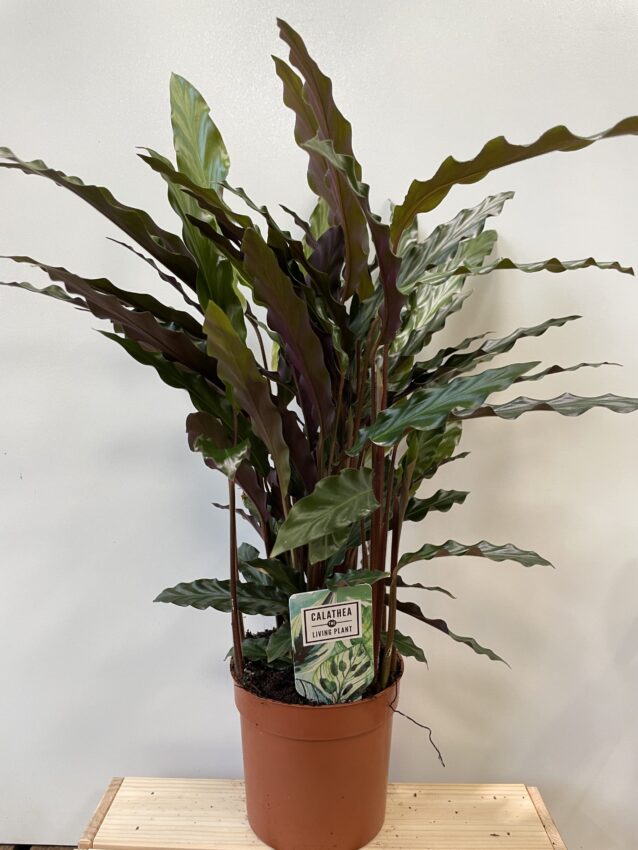
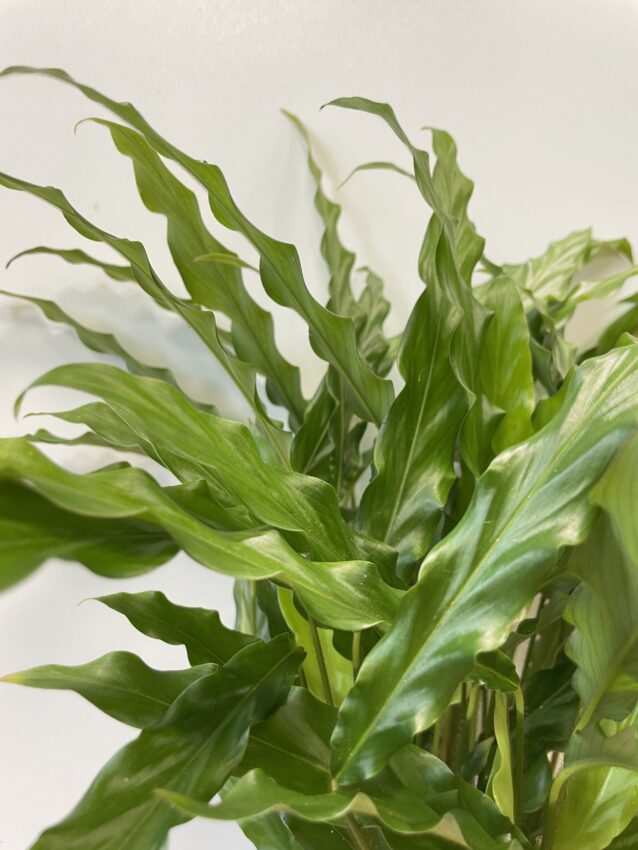
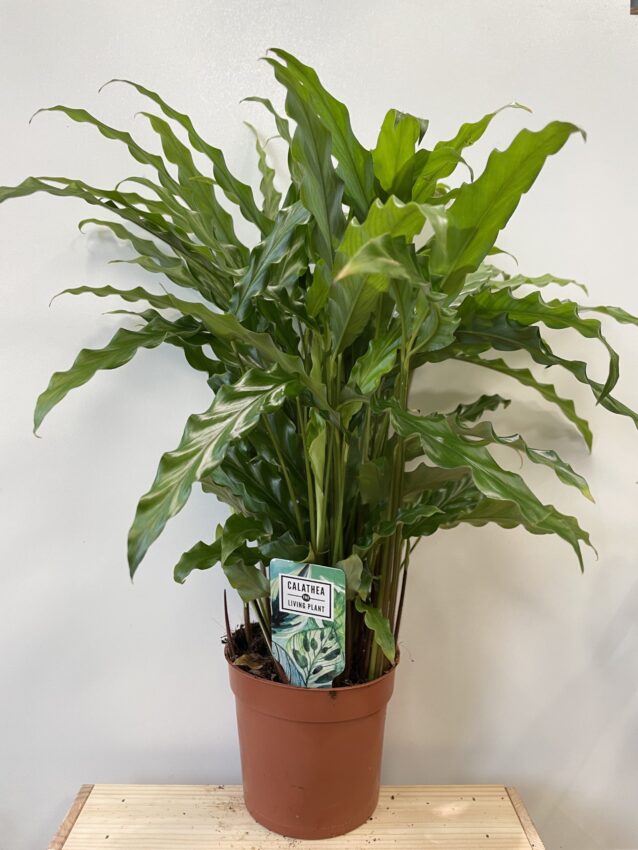

Calathea White Fusion
This wonderfully striking form of Calathea is a beautiful natural wonder. Its tall delicate stems produce medium-sized leaves covered in a spectrum of green shades and contrasting white-marbled variegation. More bright vivid purple can be found on the underside of the leaf which catches your attention at a glance and draws you in. A true spectacle of a plant and a wonderful specimen to watch mature.
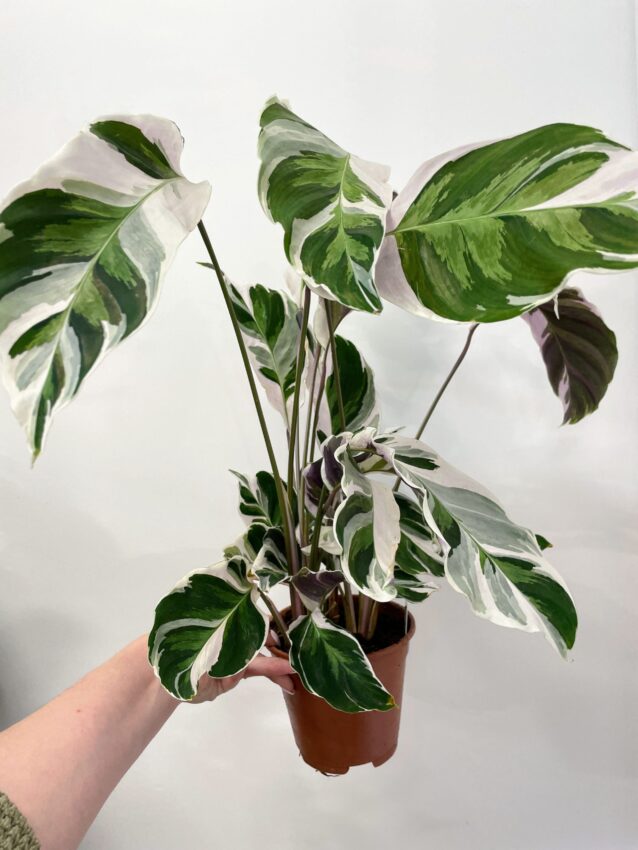
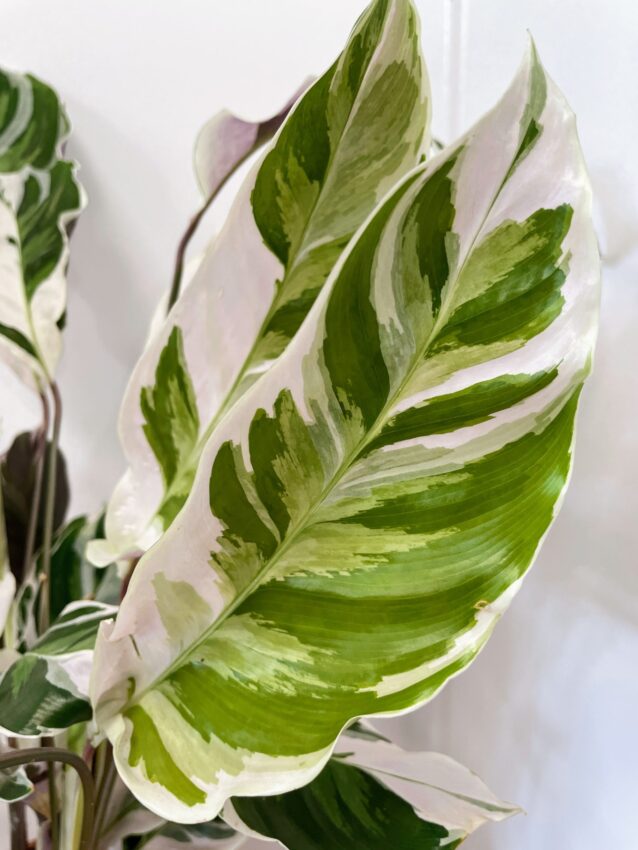
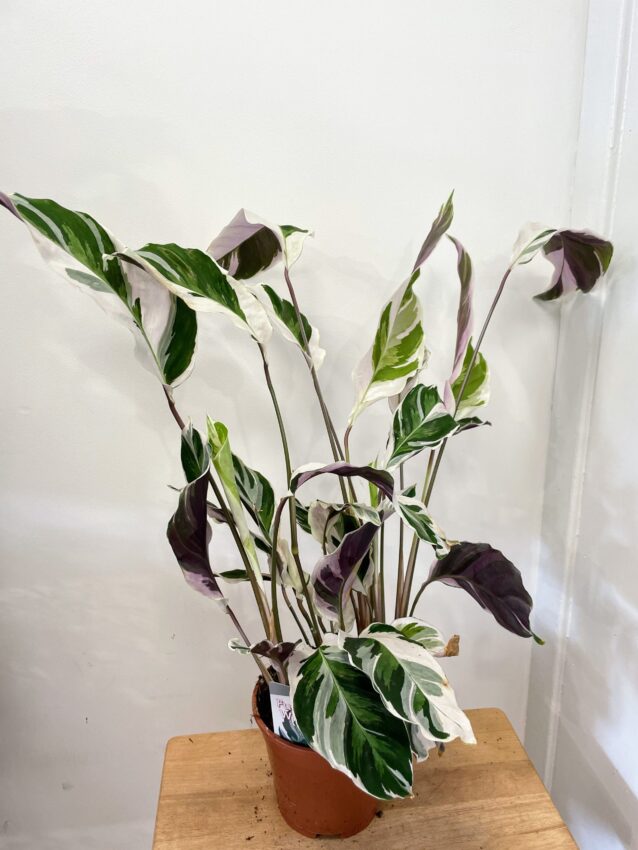

Calathea Yellow Fusion
This plant is a relatively new cultivar and could be classed as the new Calathea on the block. This wonderfully bushy and compact plant produces so many different shades of variegation, its colour is ever-changing with every new leaf. This vibrant Calathea can have a big impact on any space it fills.
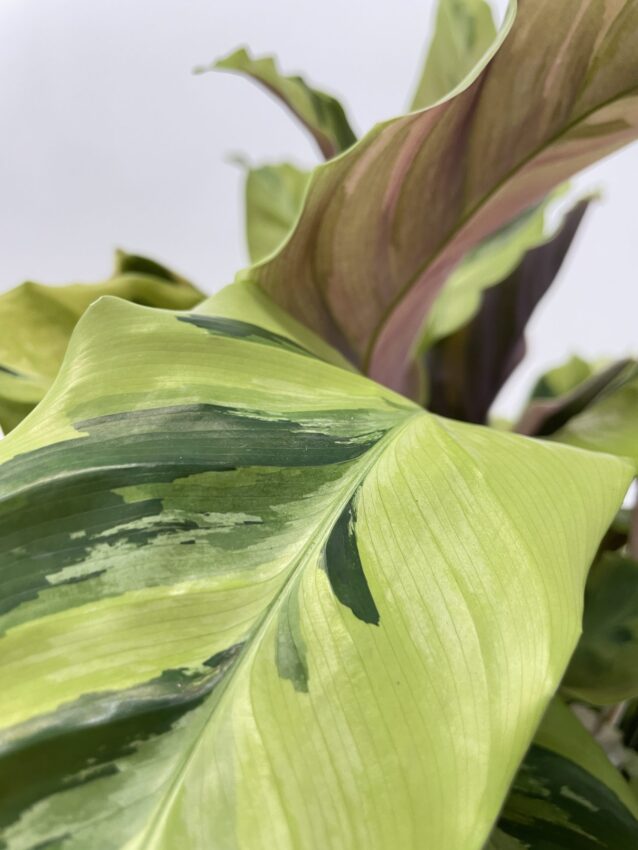

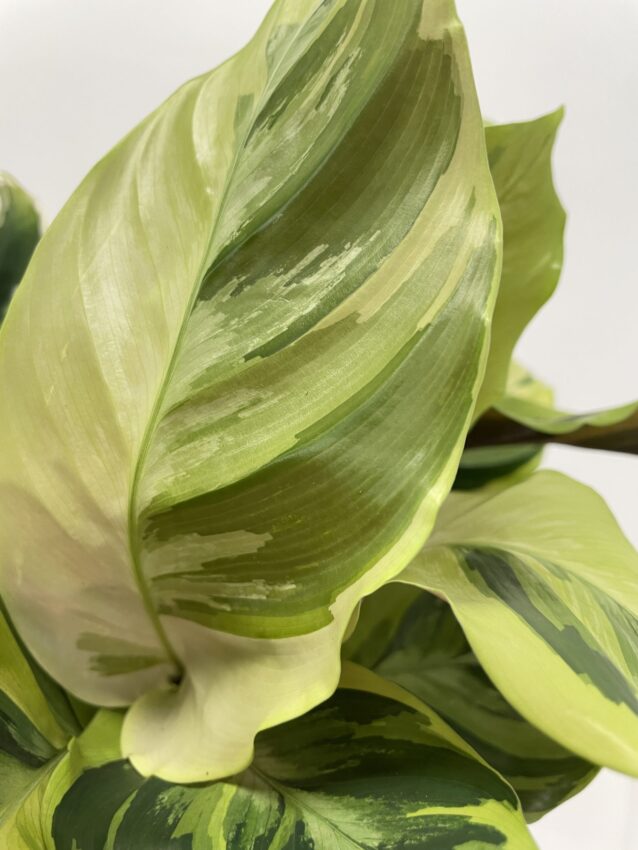
If you enjoyed this guide head over to Articles & Blogs to learn more or check out our YouTube for even more useful information!



